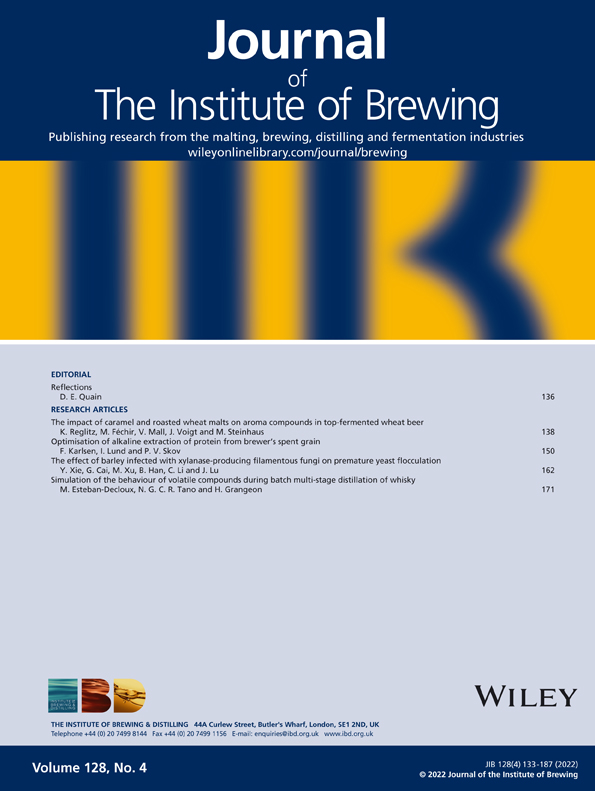MEASUREMENT OF ENDOGENOUS OXYGEN UPTAKE RATES OF BREWERS' YEASTS
Abstract
The oxygen requirement of brewers' yeast varies with both the yeast strain and the physiological condition of the yeast and it has been suggested that an estimate of the amount required can be obtained from yeast oxygen uptake values (qO2). Using two techniques (a batch aeration method and a continuous aeration method) it has been shown that the qO2 value can change with time during the evaluation, due to physiological changes in the yeast.
Since an assessment of the oxygen requirement is dependent on a representative measurement of qO2 value, tests designed to estimate this parameter should incorporate the following features: (i) Access of the yeast to oxygen should be restricted during sampling and at all times prior to analysis, (ii) qO2 measurements should be made immediately before the yeast is pitched in the brewery, (iii) qO2 value should be expressed on a per cell basis in order to eliminate the need for (time consuming) dry weight determinations. Time dependent changes in qO2 values, which take place during the assay, can affect the precision of the test results. It has been found that the use of high concentrations of cells (1–2 g dry weight Litre−1) reduces this error.




